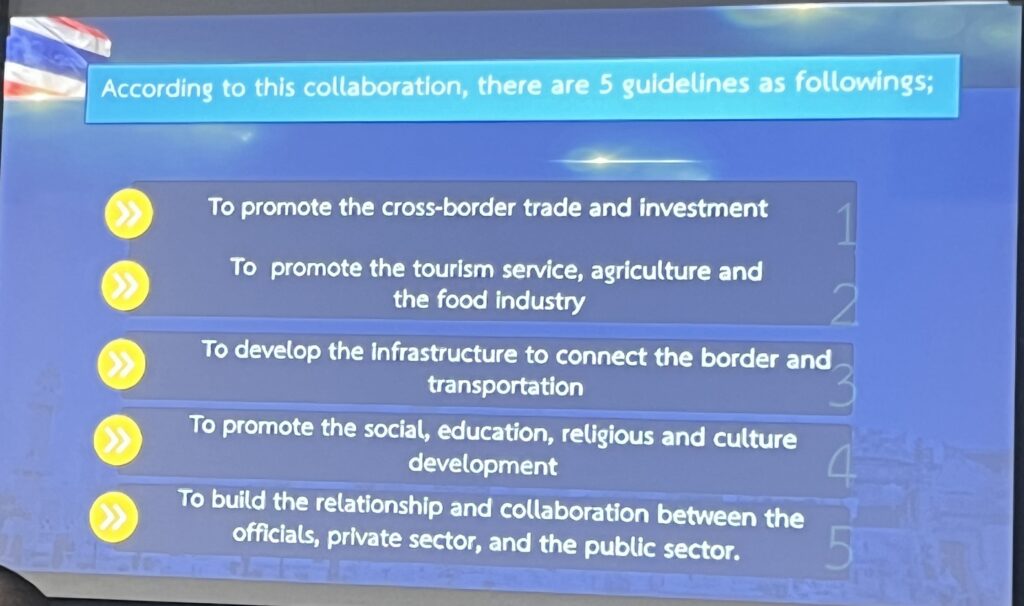21 Jun 2024
Tourism-deprived South Thailand Provinces expect better days with improved road, air access
Narathiwat Province, South Thailand — The South Thailand provinces of Pattani and Narathiwat are pretty much at the bottom of the heap in terms of tourism. That is set to change over the next three years thanks to upcoming improvements in road and air accessibility. An upgrading of Narathiwat airport is due for completion by mid-2025. A second bridge linking Malaysia and Thailand at the Sungai-Kolok border crossing is set to start construction in April 2025 and budgeted for completion by 2027.
A delegation of ambassadors and diplomats escorted on a familiarisation trip to the South between 11 – 13 June 2024 had a chance to come up to speed with both projects. The trip was organised by the Thai Ministry of Foreign Affairs (MFA) and the Southern Border Provinces Administrative Centre (SBPAC) to showcase the changes taking place in the Muslim-majority provinces of Yala, Pattani and Narathiwat. The group included diplomats from Brunei Darussalam, Egypt, Iran, Malaysia, Maldives, Nigeria, Indonesia and Uzbekistan, along with four Ambassadors of Thailand to Saudi Arabia, Indonesia, United Arab Emirates and Türkiye, and several senior MFA officials
The SBPAC is the primary agency responsible for overseeing development in the region.
The envoys learnt about the current situation and government policies to promote a multi-cultural society in the Southern Border Provinces, and the economic potential in terms of infrastructure, trade and investment, Halal-related business, and tourism. They visited various places that showcase the strength of the area and received briefings on the social, cultural and economic development plans. Boosting Travel & Tourism was clearly identified as being a mainstream agenda.
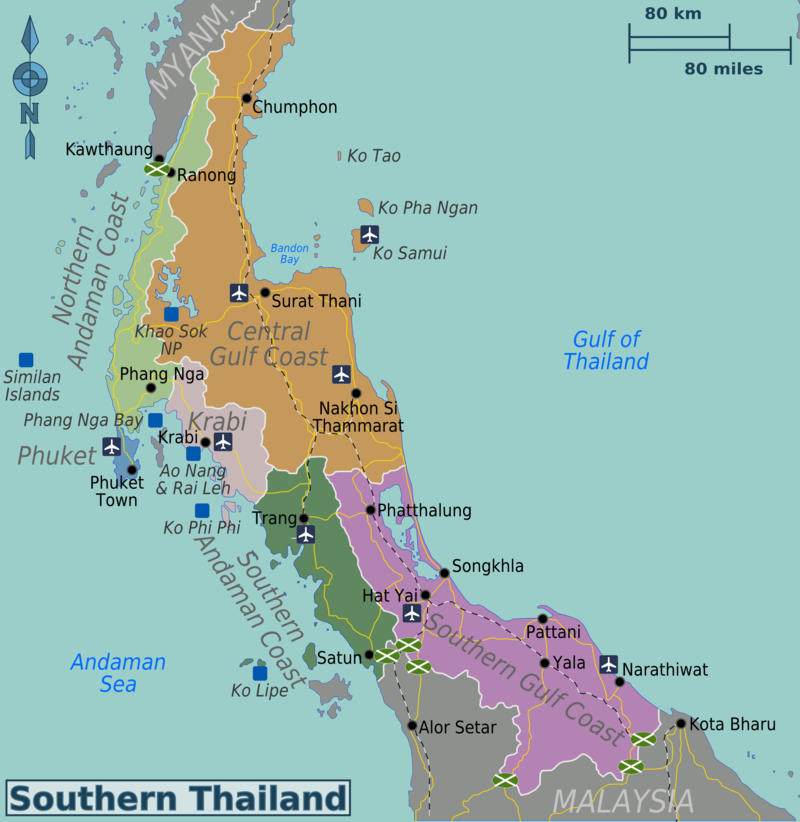
This map shows the geographical locations of the 14 Southern Thai provinces, and their proximity to Malaysia. Picture credit: Wikitravel.
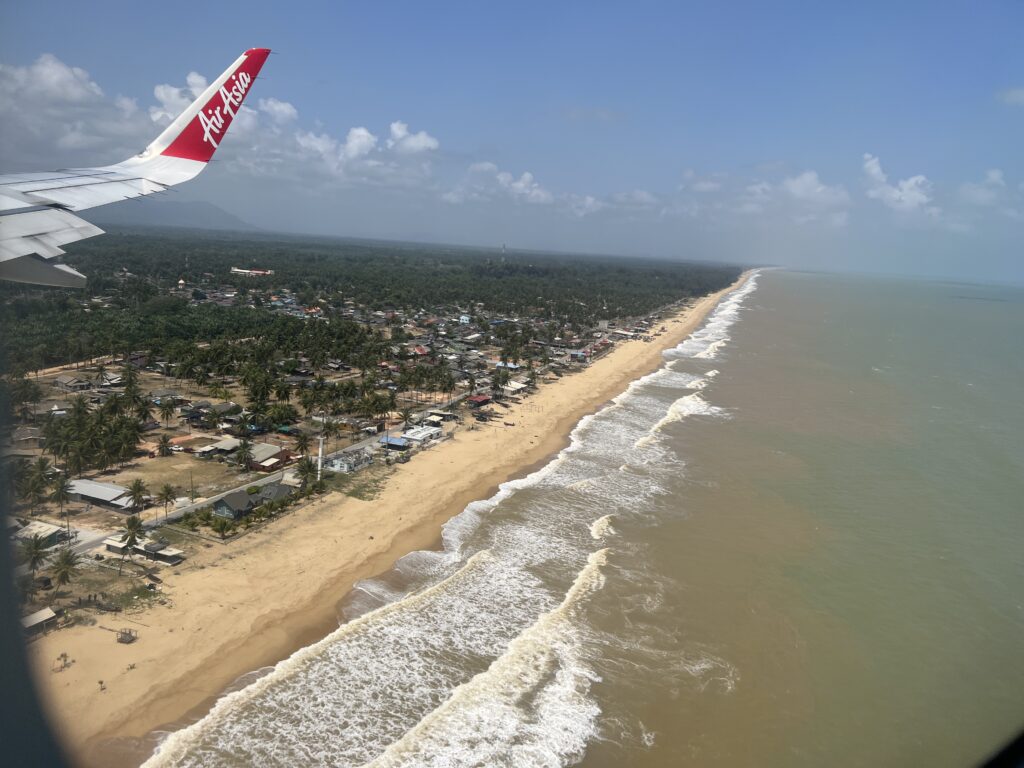
Miles of great beaches make for a picturesque descent into Narathiwat airport. Great tourist potential.
As the charts below show, the years of unrest have clearly hurt visitor arrivals and hotel occupancies. Of the 14 provinces categorised as being part of South Thailand, six have direct airport access and enjoy bumper visitor arrivals. The seventh, Narathiwat, is lagging. Amongst the four Thai provinces bordering Malaysia, Satun and Songkhla on the Western side of the peninsula have done far better than Yala and Narathiwat on the East.
In all three charts, Pattani is at the bottom of the heap, with Narathiwat not much further above. This is what the Thailand Government plans to change.
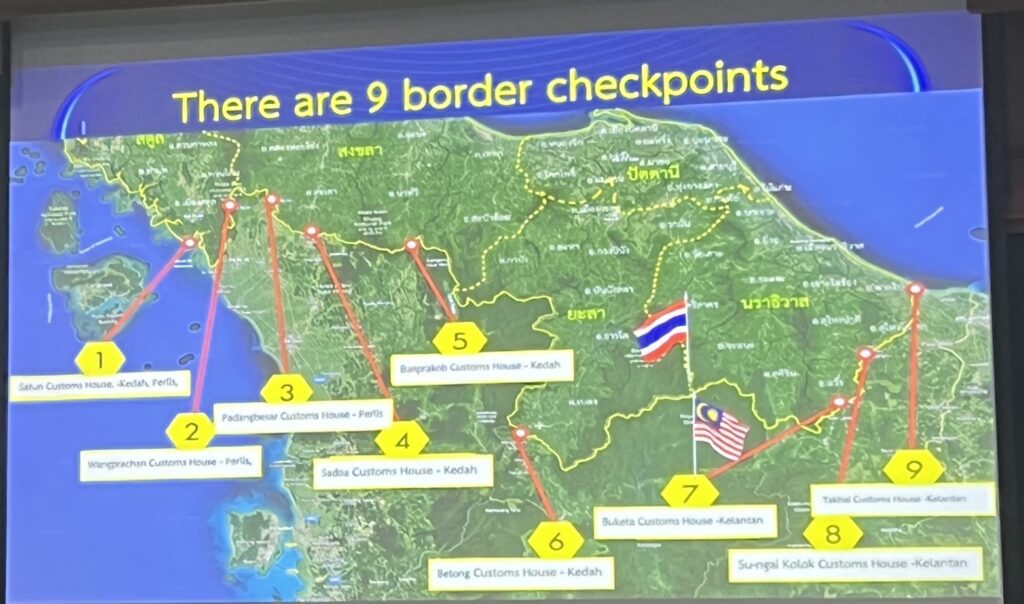
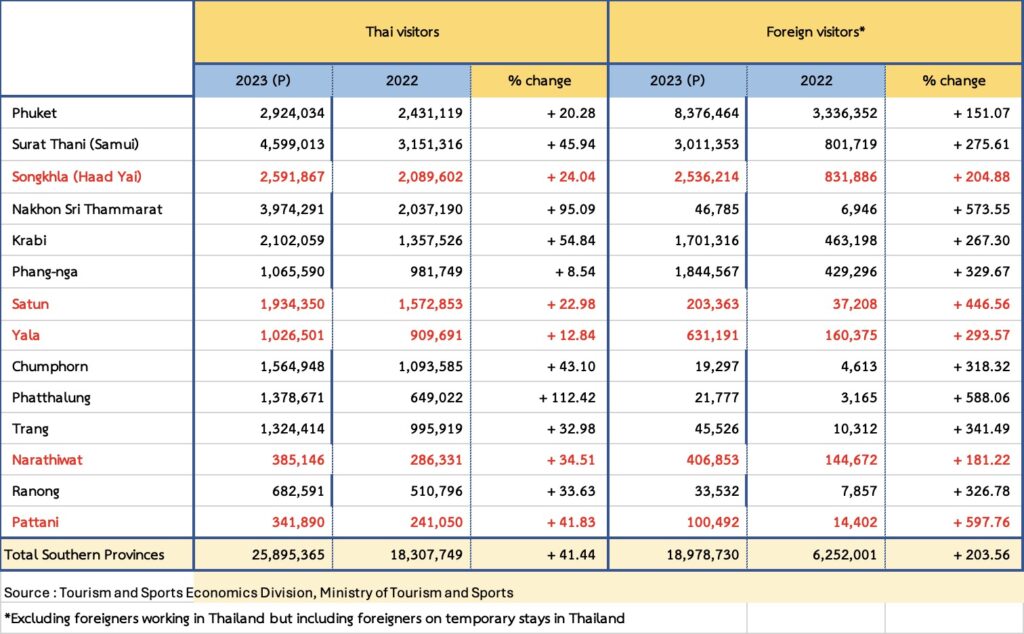
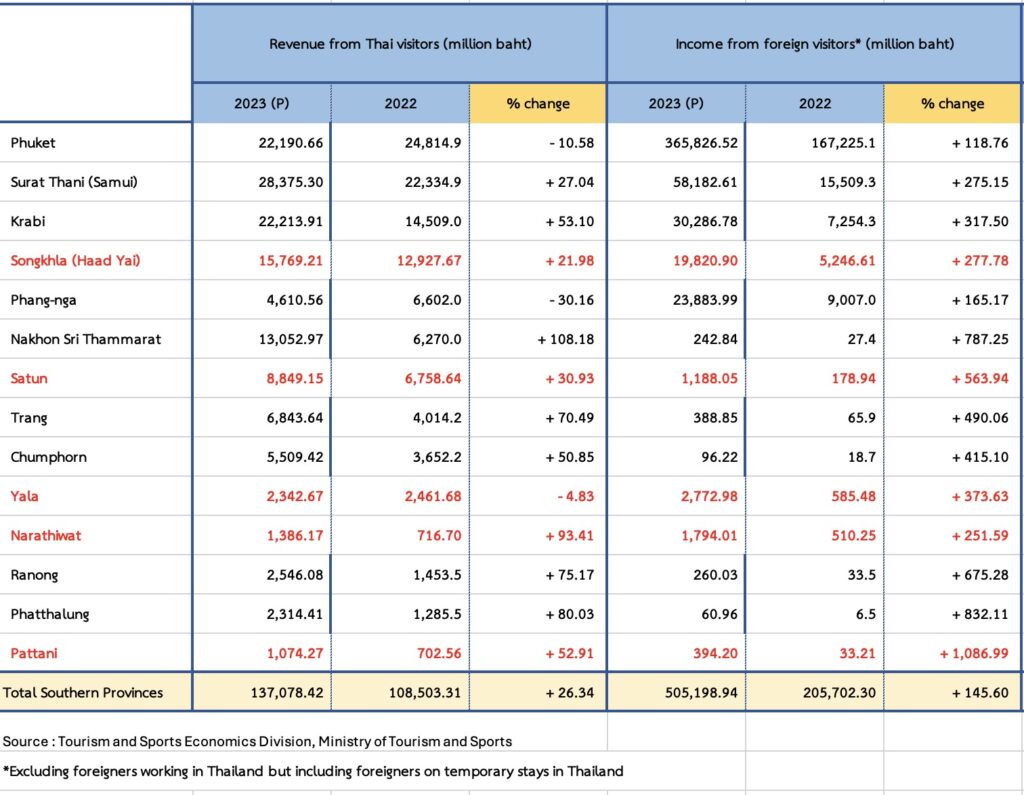
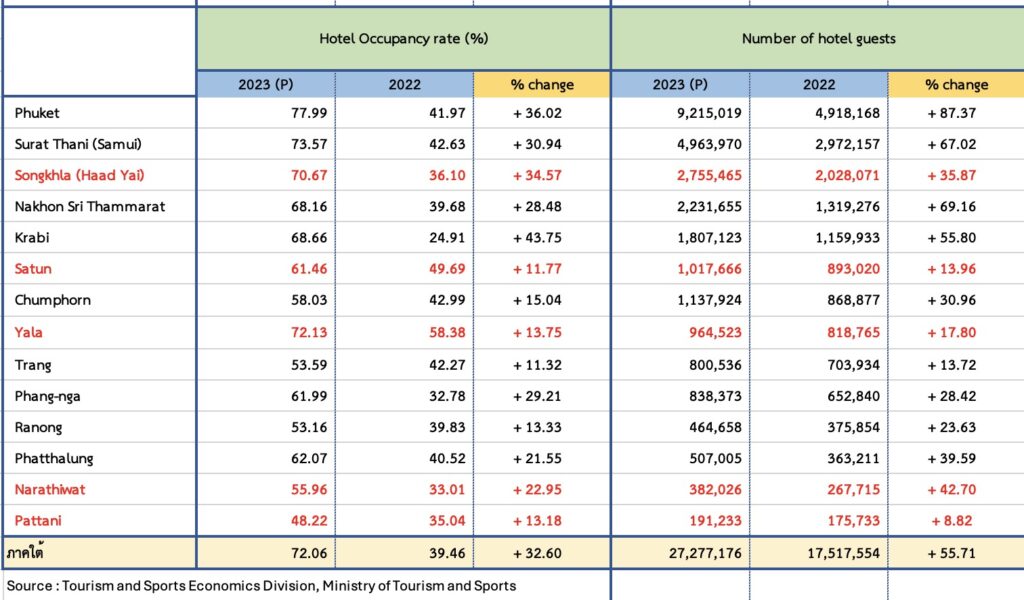
The first project heading for completion is the upgrade of Narathiwat airport. A 12,000 sq m passenger terminal is under construction at a cost of 639 million baht to boost the passenger movements to 600 per hour or approximately 1.7 million people per year. The current 3,000 sq m terminal will be converted to handle flights taking Muslim pilgrims for the annual Hajj. The 2,500 metre runway can take widebody jets and considered okay for the moment.
This is what the terminal looks like presently.
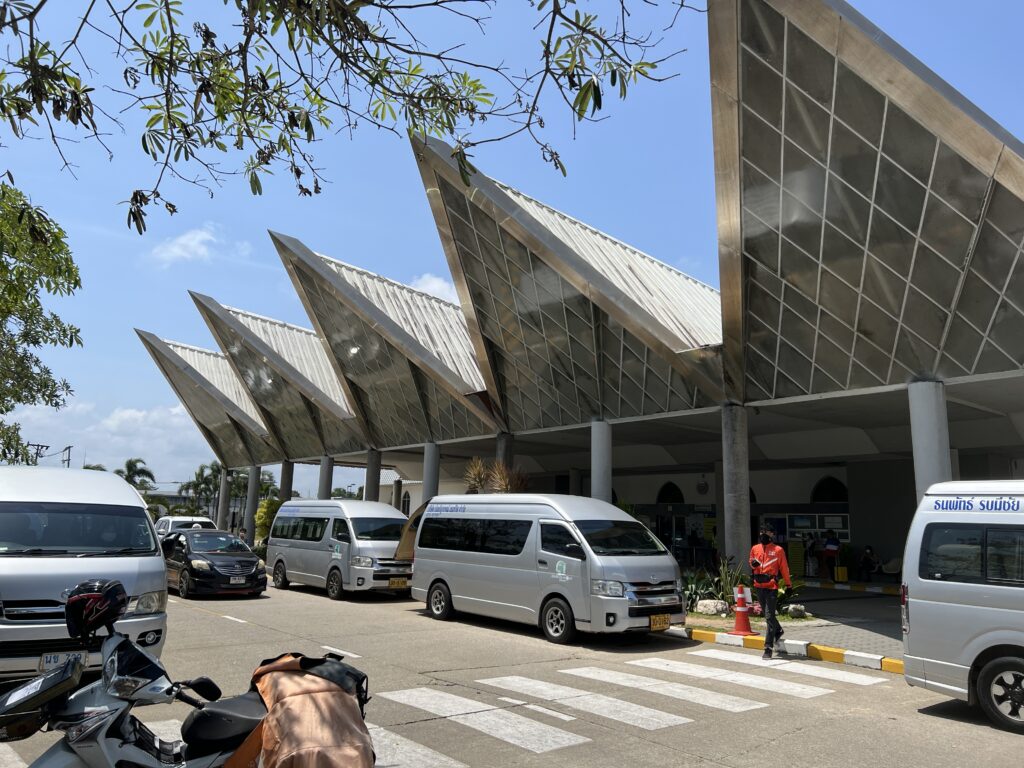
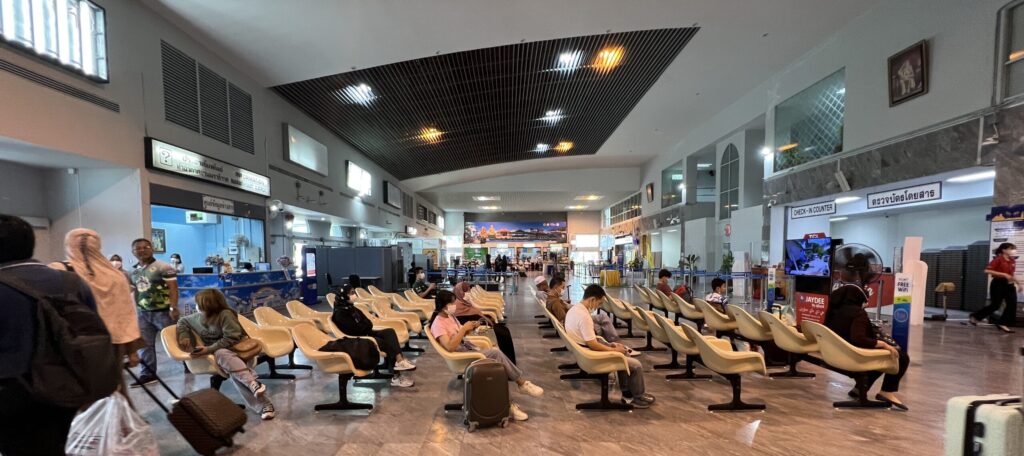

Stats on passenger and aircraft movements at Narathiwat airport.
This is what the airport will look like after completion of the new terminal.
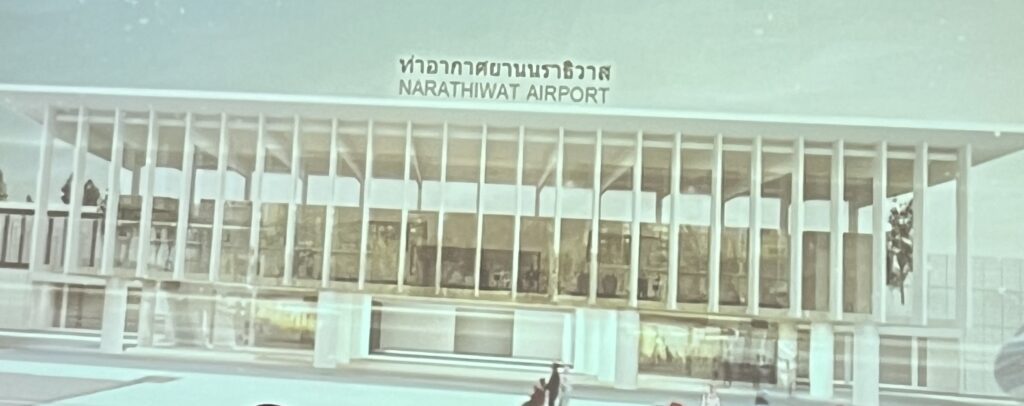
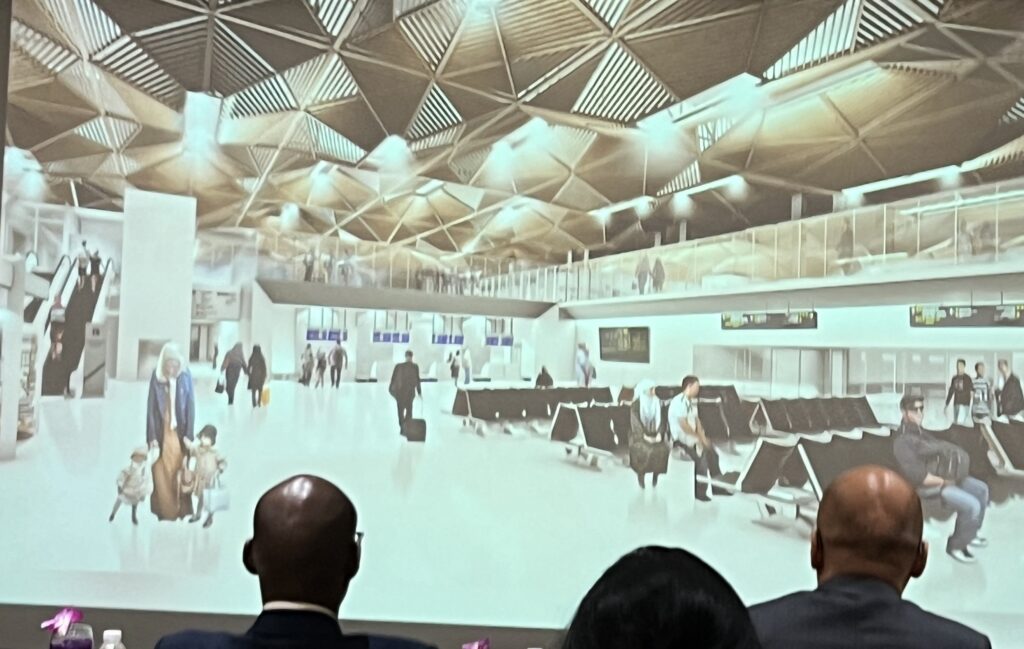
The second project is the border-crossing bridge between Thailand and Malaysia. These images below show the current bridge and slides of the new bridge, along with artists impressions.
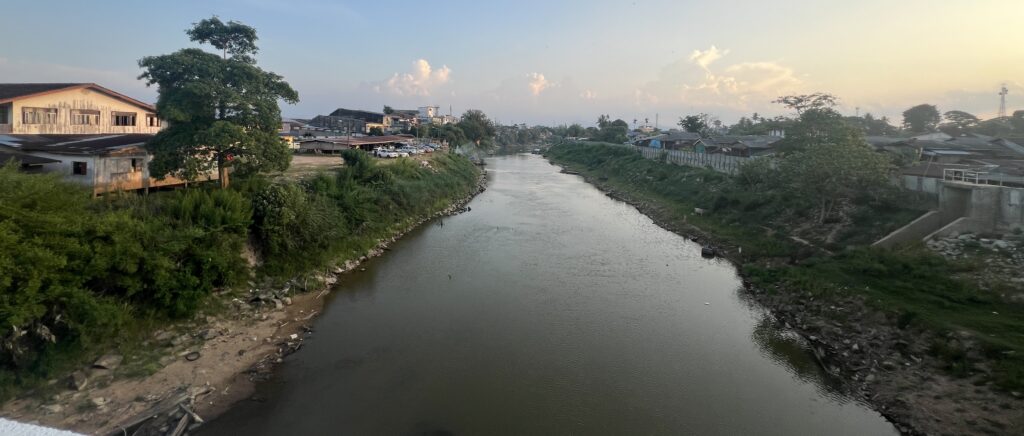
The “river” which forms the border between Thailand (on the right side) and Malaysia at Sungai Kolok.
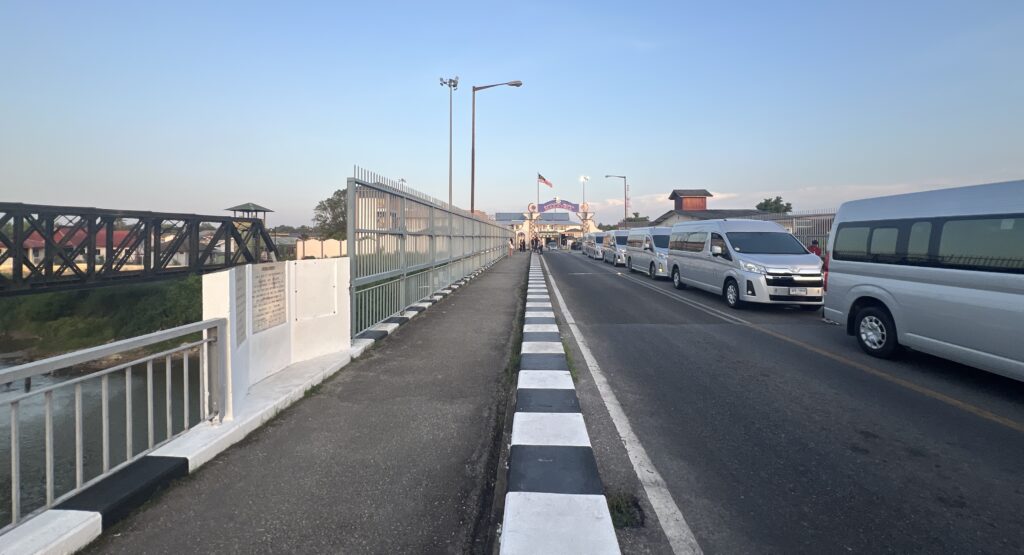
The current bridge between the two border checkpoints, with Malaysia on the far side.
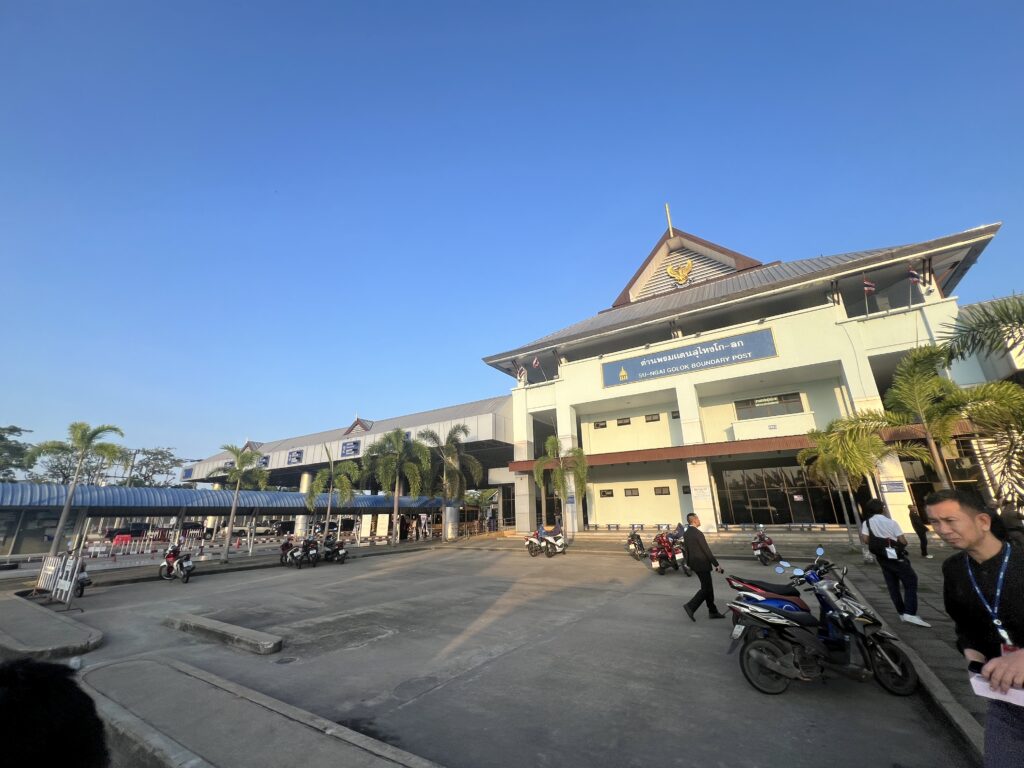
The border checkpoint on the Thai side.
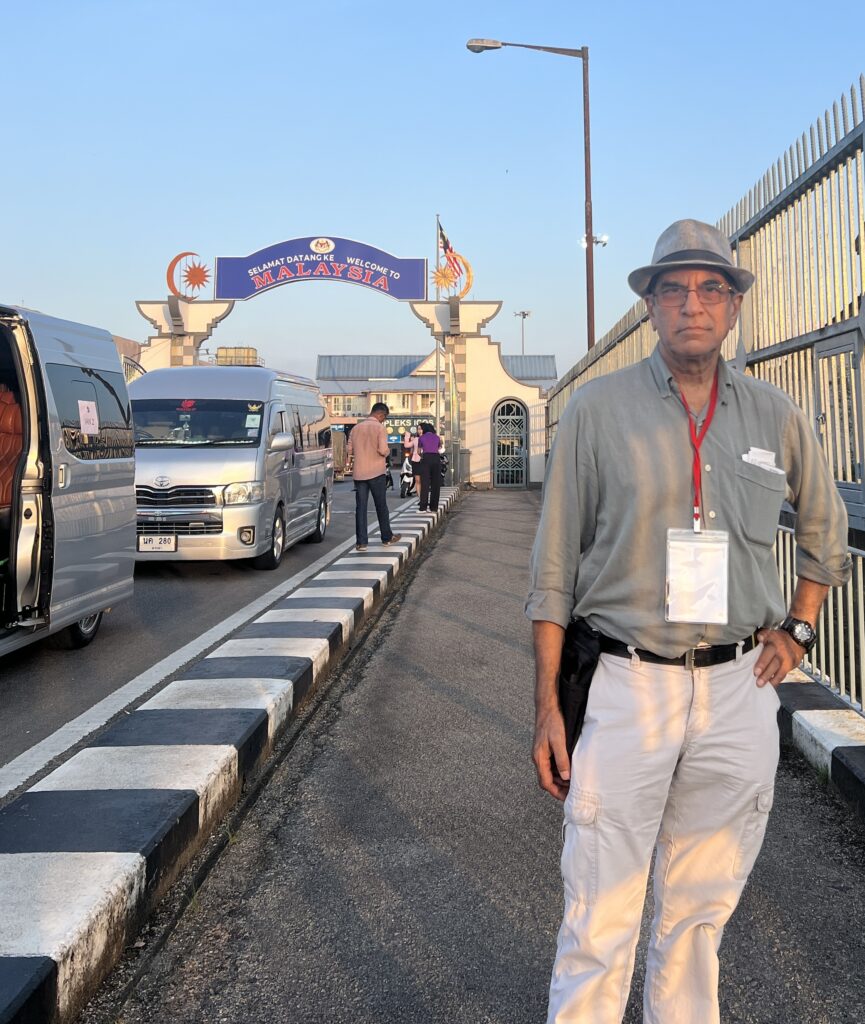
The writer just a few steps away from the Malaysian border. Unfortunately, I was not carrying my passport or else I would have walked over for some great curry laksa.
The slides below explain the new bridge projects in the pipeline.
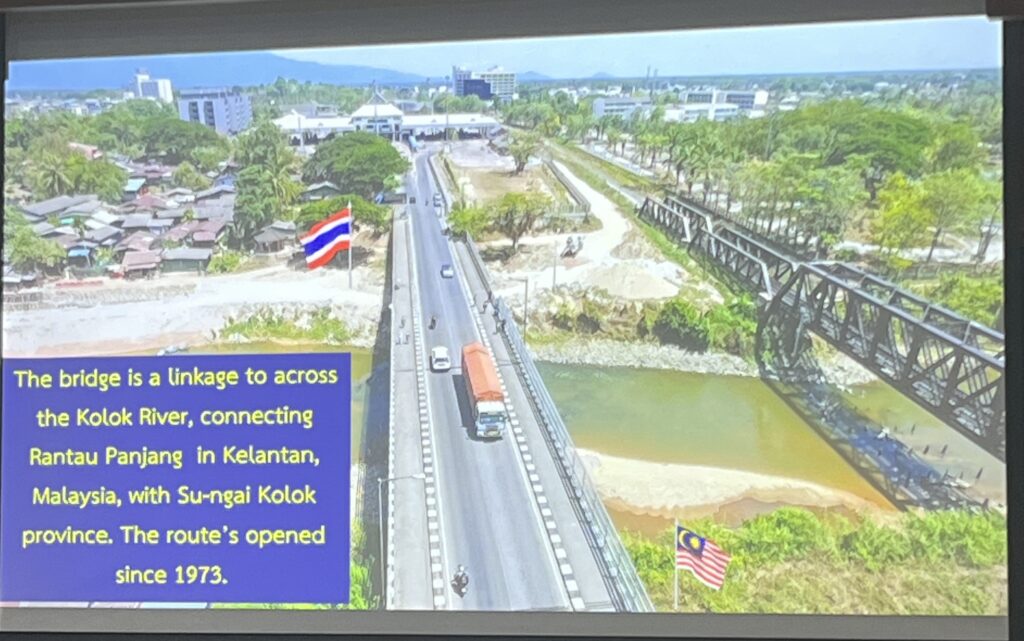
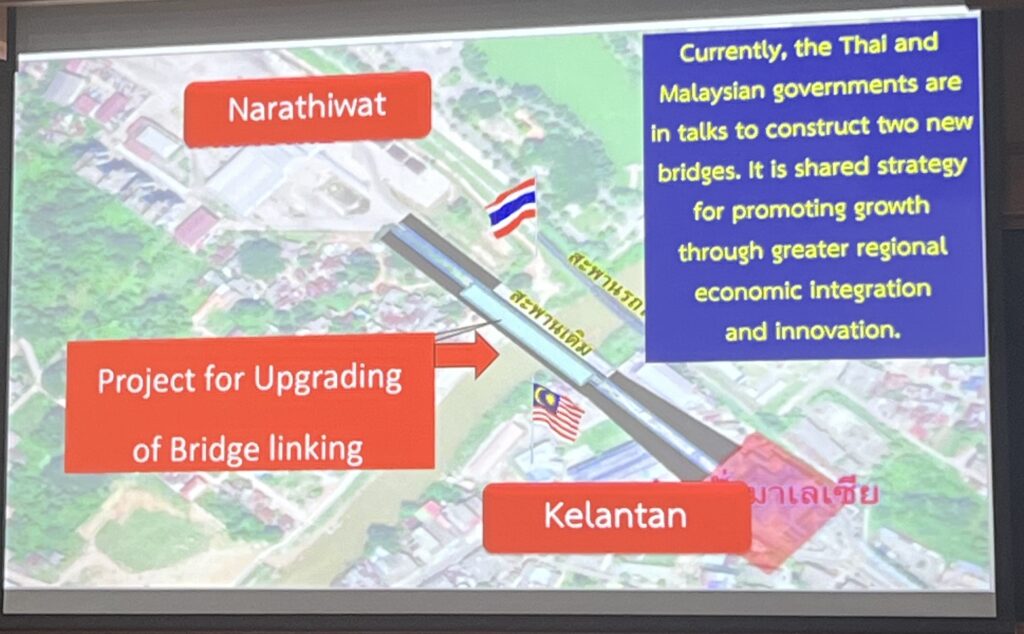
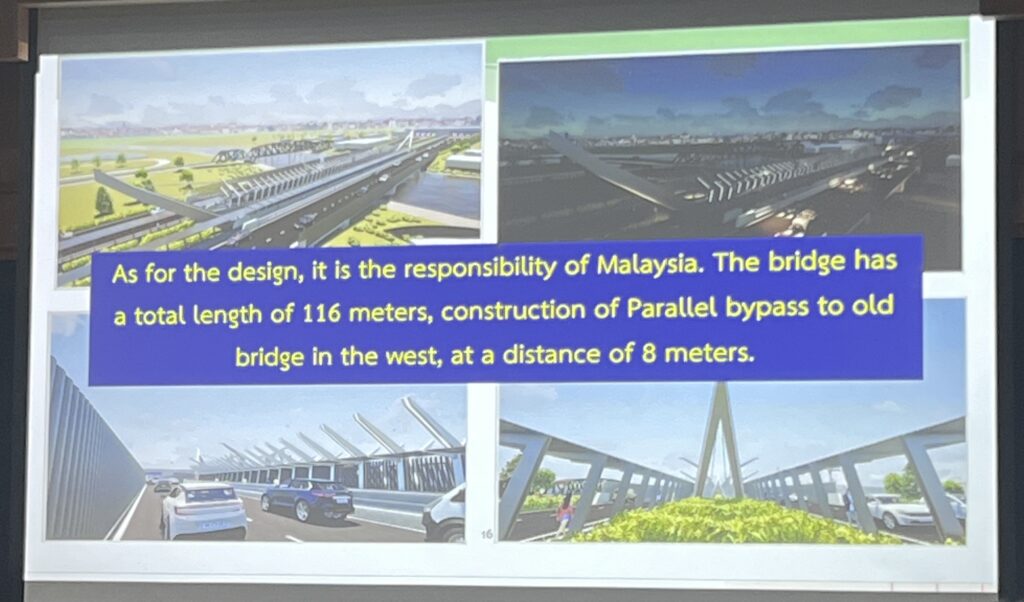
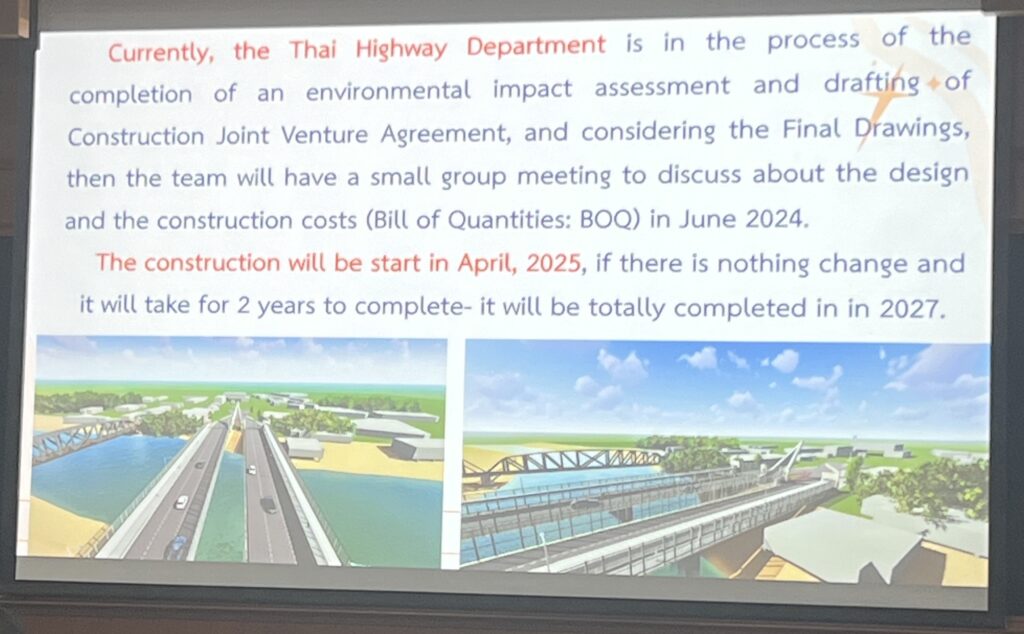
A railway line has been in limbo since 2001.
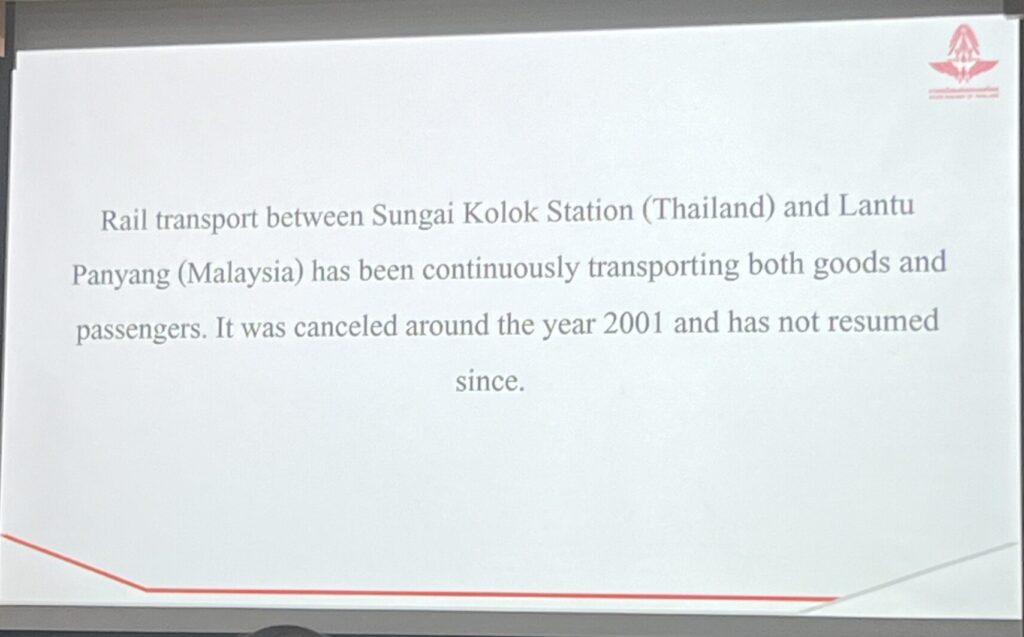
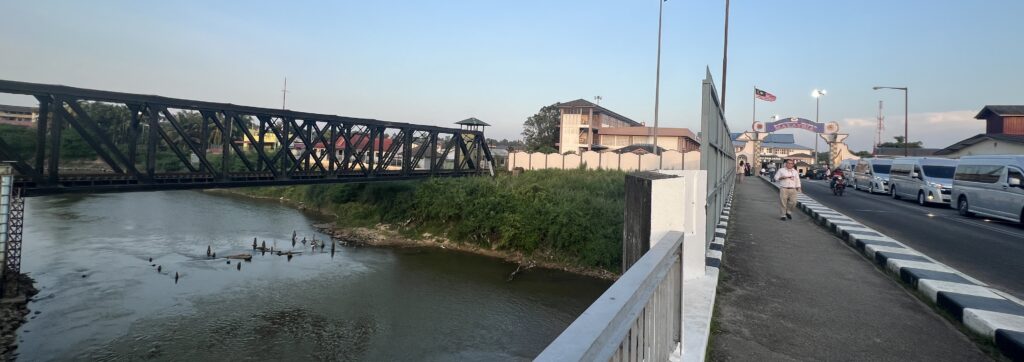
The railway bridge is lying unused, right next to the road bridge.
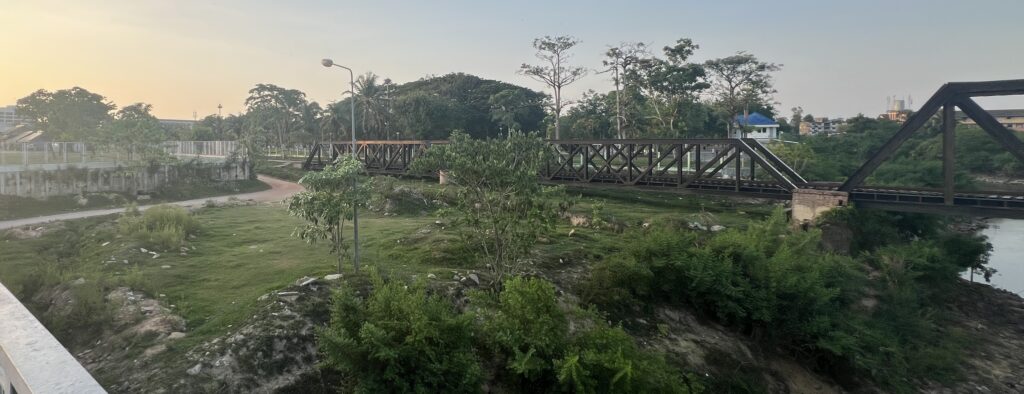
This is the railway bridge extending into the Thai side.
This slide below shows the five-point development agenda that is driving the collaboration. A lot of work lies ahead.
